A surf ecosystem is more than waves. Iconic surfing waves intersect with biodiversity hotspots that are critically important for marine conservation.
As a conscious traveler and advocate for protecting the environment, I often become emotionally invested in the places I visit…especially outdoor recreational areas like beaches and parks.
Over the past several years, I’ve traveled to some of the most beautiful and best surfing locations in the world. However, you don’t need to be a surfer to enjoy spending time by the water.
Stats from AAA show that annually at least 50% of Americans plan a seaside holiday. For many of us, a summer holiday means returning to the same beach, year after year, and we expect it to be the same. Sadly, this is not always the case.
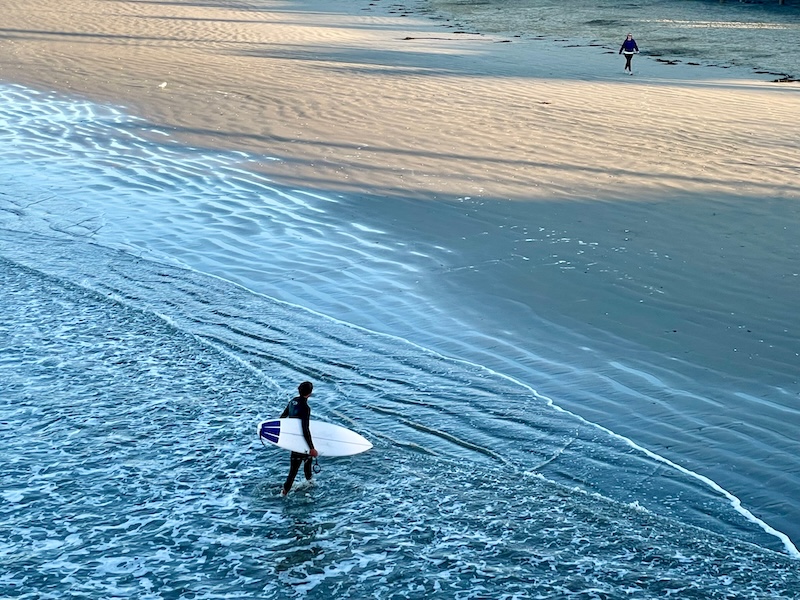
Surfer on the beach in California by Penny Sadler
Surfers are often the first to notice changes to a coastline, simply because the ocean is their second home, not just a place they visit for a holiday. They are also the first to rally their community when those changes threaten the marine ecosystem.
This is where World Surfing Reserves come into the picture. Created and managed by Save the Waves Coalition, WSRs were created to recognize and protect surf breaks of exceptional quality, as well as their surrounding environments and communities. To earn the designation, a site must demonstrate not only consistent, high-quality surf, but also significant cultural value, biodiversity, and a local commitment to stewardship.
In this article, I’ll introduce you to four World Surfing Reserves where the waves are exceptional—and the commitment to conservation runs just as deep.
Contents
What makes a World Surfing Reserve?
A surf ecosystem is more than waves. Iconic surfing waves intersect with biodiversity hotspots that are critically important for marine conservation.
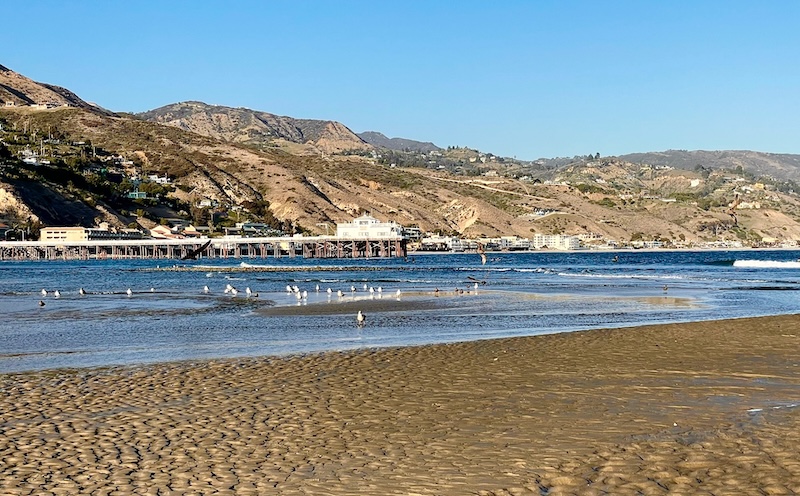
Malibu Pier seen from the Malibu Lagoon. Penny Sadler
Malibu, southern California
The first World Surfing Reserve, Malibu’s Surfrider Beach has been known for its long peeling right-hand point breaks since the 1920s. Malibu surged into the world spotlight in the 50s and 60s due to Hollywood and the Gidget movies, and surf culture moved mainstream.
According to Paul Gross, former editor of Surfer Magazine, puts it, “Malibu is the exact spot on earth where ancient surfing became modern surfing.”
Beyond the excellent surf considered by many to be the best in the world, Surfrider Beach is part of an ecosystem that includes Malibu Creek watershed and Malibu Lagoon meeting the criteria of Save the Waves for a Surfing Reserve to include biodiversity.
Malibu is a tight-knit coastal community with a strong identity shaped by both nature and celebrity. Malibu is dotted with cafés, surf shops, and beach access points along Pacific Coast Highway. The surrounding hills offer hiking trails and ocean views. Visitors can stroll the Malibu Pier, sample local seafood, or simply watch the surf lineup from shore.
I’m not a surfer, but I visit Malibu every year. I walk the beaches, explore the tide pools, and stop for a drink on the pier. If you’re visiting Malibu, check out my article about what to do, including wine tasting, lobster rolls, and beaches for tide pools, surfing, etc.. I usually go in the winter, so the surfing is not the best, but the beaches are not crowded then, either.
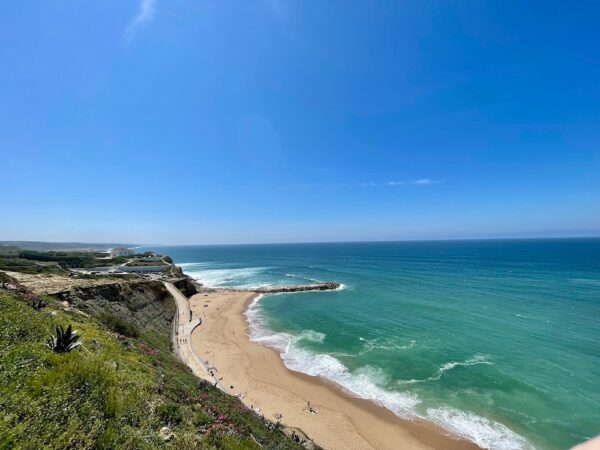
Ericeira beaches, Portugal. Penny Sadler.
Ericeira, Portugal
Ericeira became Europe’s first coastline designated a World Surfing Reserve. Located just 35 kilometers north of Lisbon, this fishing town-turned-surf hub has become one of the most iconic destinations in global surf culture. Its four-kilometer stretch of coast includes seven distinct surf breaks, from the long walls of Ribeira d’Ilhas to the powerful barrels at Coxos. For both professionals and beginners, Ericeira offers a rare concentration of wave variety in such a compact area.
Beyond wave quality, the coastal geography has profound ecological significance. The reefs that shape the waves double as habitats for marine life, while the surrounding cliffs and dunes support native vegetation. The World Surfing Reserve program has helped highlight the importance of managing coastal development in a region that has seen rapid growth as both a tourism destination and a commuter town for Lisbon.
Ericeira is a cute town with quirky shops and great food, and shows how surfing can be both a driver of local economies and a catalyst for protecting fragile coastal ecosystems. Its WSR designation affirms that a thriving surf culture and environmental stewardship can go hand in hand.
If you’re going to Lisbon, you’ll want to read my article about day trips and things to do within a short drive of Lisbon, including wineries and the best place to see the sunset.
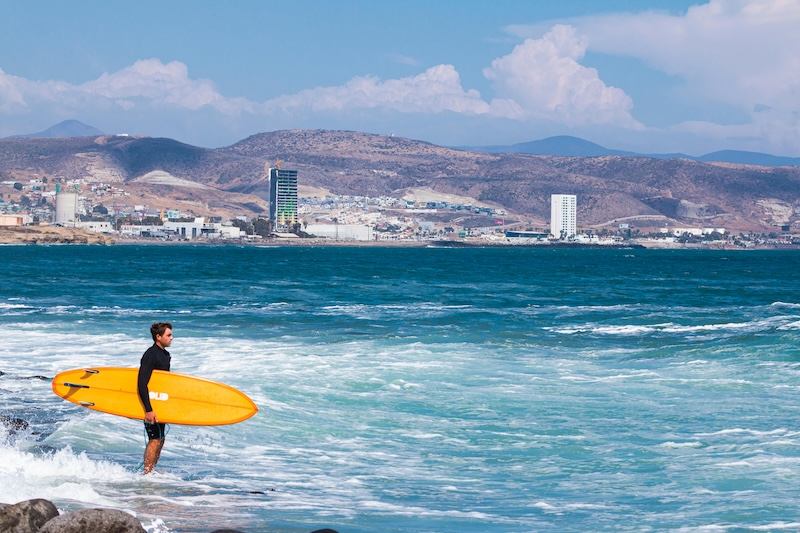
photo by Nairod Reyes
Bahia de Todos Santos, Ensenada, Baja California, Mexico
In 2014, Bahia de Todos Santos became the sixth World Surfing Reserve. Located in Ensenada, it is considered the birthplace of Mexican surf culture.
Bahía de Todos Santos encompasses a diverse stretch of Baja California’s Pacific coastline, including the famed big-wave spot at Isla Todos Santos. Long before its WSR status, the bay was already a well-known destination in the surfing world. From heavy swells that challenge elite big-wave riders to more approachable breaks closer to shore, it has drawn generations of surfers from Mexico, the United States, and beyond.
Bahia de Todos Santos is a bay. Its cultural hub is Ensenada, a lively port city that blends Mexican coastal charm with a cosmopolitan energy. Don’t confuse the name of the bay with the Pueblo Magico of Todos Santos about an hour north of Cabo San Lucas Mexico.
Part of Bahía de Todos Santos’ appeal is its accessibility. Located about 65 miles south of the U.S.–Mexico border at San Diego, it’s an easy drive along the scenic coastal highway.
Californians have been chasing waves in Ensenada since the 60s. I used to go with friends, chasing both lobster and waves…the beach culture was incredible. Very casual, friendly and eclectic.
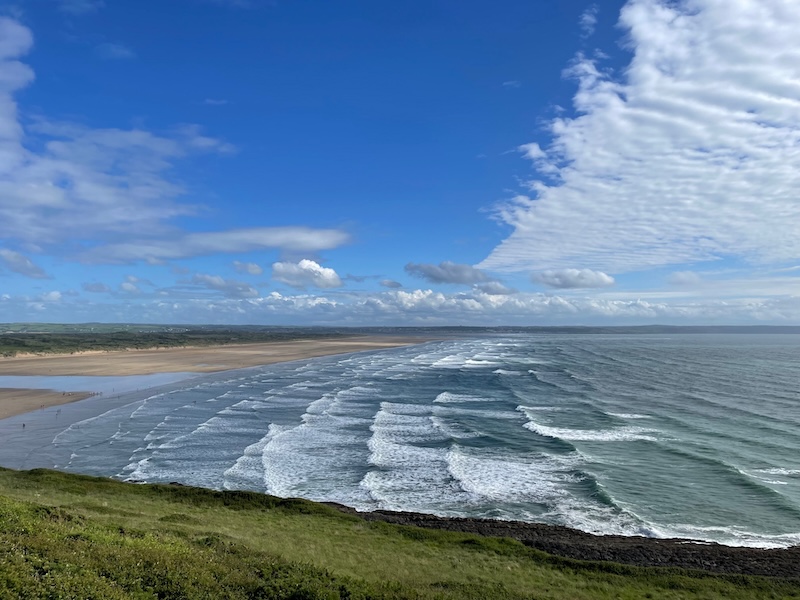
Waves at Saunton Beach, North Devon, UK. Penny Sadler
North Devon, Devon, UK
In 2022, North Devon was recognized as the first World Surfing Reserve in the United Kingdom. Stretching along 30 kilometers of coastline, the designation encompasses iconic breaks such as Croyde, Saunton Sands, Woolacombe, and Lynmouth. These beaches have long been favorites among British surfers, offering everything from beginner-friendly rollers to challenging reef and point breaks.
The North Devon World Surfing Reserve is part of a UNESCO Biosphere zone. The dunes at Braunton Burrows and the estuaries form complex ecosystems supporting a wide variety of flora and fauna.
The World Surfing Reserve designation has given local groups—from surf clubs to conservation charities—greater visibility and support in their efforts to protect the coastline. Initiatives range from dune restoration and water-quality monitoring to campaigns against unsustainable coastal development. These efforts are deeply collaborative, bringing together surfers, residents, and environmental scientists to ensure that the waves and ecosystems are safeguarded for generations.
I’m a frequent visitor to North Devon and have seen this community activism firsthand (and even participated!) I plan to continue to visit North Devon. I love walking the beaches and the Southwest Coastal Path. You don’t need to be a surfer to love the beach.
I have loads of tips for visiting North Devon in my article on Braunton and Saunton. There’s a strong history of surf culture there as well.
How you can help
Today our oceans are under siege from multiple environmental threats, most manmade. Plastic trash that drifts on currents and washes up on distant shores is one of the top pollutants. Runoff from farming, industry, oil, and chemical spills in the ocean, combining with higher water temperatures, threaten this delicate ecosystem.
Protecting our oceans and the wildlife that depends on the ecosystem both in the water and on the shore is important to me. If you feel the same, please consider joining forces with Save the Waves.


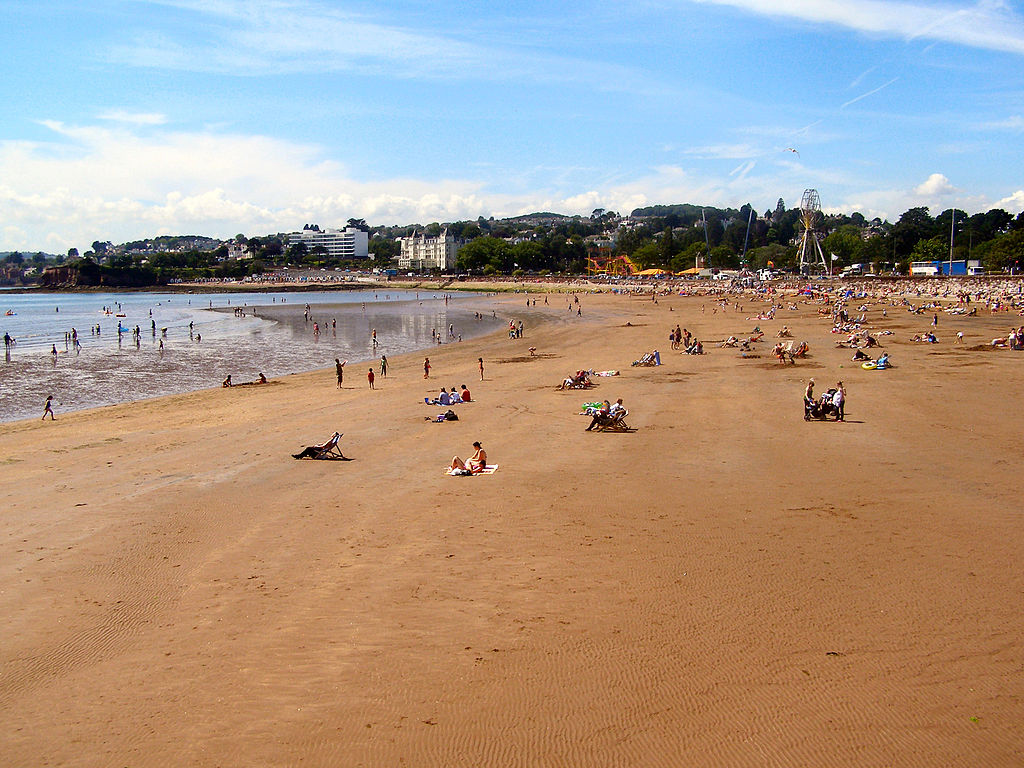

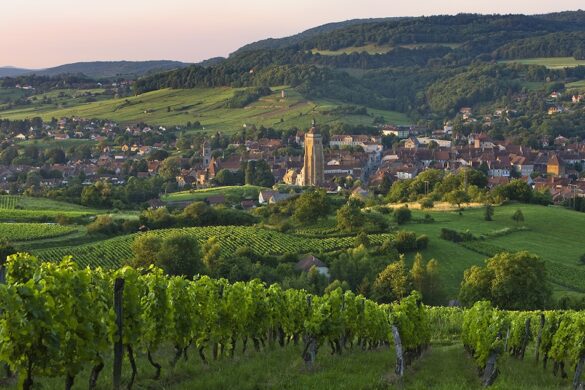




1 comment
Love your thorough information here!